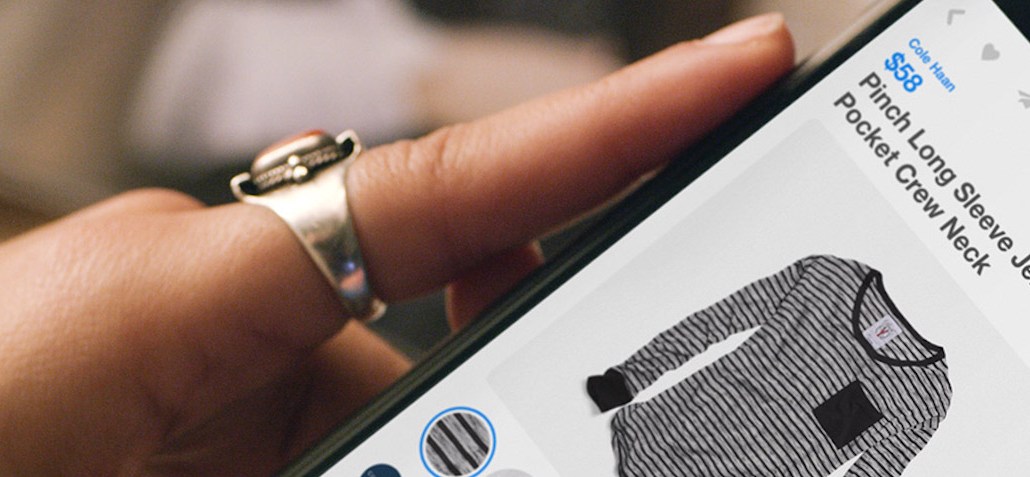Why buy buttons on Pinterest and Instagram haven’t taken off for retailers

When Pinterest and Instagram introduced click-to-buy features last summer, the hope was that they’d help brands turn mobile browsers into shoppers. After all, mobile represented just 16 percent of e-commerce dollars in 2015, compared to 84 percent on desktop, according to comScore.
But these buy buttons haven’t quite taken off as hoped. They generate very low sales volume to retailers and are negligible for most large brands, according to Sucharita Mulpuru, principal analyst for Forrester.
“Few retailers say that social networks are a great customer acquisition tool,” said Mulpuru. “There is so much content on Pinterest, Instagram and other discovery engines, so any individual piece of content gets very little visibility, and even less conversion.”
Users can only shop for a limited number of products on social media, and those platforms cannot store inventory for brands the same way Amazon does for retailers. When viewers click on an image, for example, they may find a dead link or a product that is not shoppable. “On Pinterest, the intersection between what people want to buy and what is available to buy is huge,” said Mulpuru. “The majority of most popular pins are not buyable.”
Instagram and Pinterest look like natural sales generators because of their visual nature, but they haven’t yet got credit for sale. Research company GlobalWebIndex polled 16- to 64-year-old social users in November of last year, and found that only 14 percent of respondents were interested in Instagram buy buttons and 13 percent were interested in Pinterest.
Meanwhile, none of the five brands that Digiday interviewed for this article has invested heavily in buy buttons on those two platforms. Peloton, for example, is using Facebook, Instagram, and Pinterest to market to prospective buyers, but it hasn’t yet had social shopping campaigns where customers can buy products directly on social without visiting the company’s website. Benefit Cosmetics, on the other hand, sees very infrequent use of the buttons on Instagram and Pinterest. “Our buys are low [there],” a Benefit spokesperson told Digiday.
Birchbox, which has a shoppable Instagram store powered by e-commerce company Have2Have.It, also admitted that the image-and-video-sharing platform is not a big sales driver for the brand. “It’s not a main sales channel for us,” said Juliette Dallas-Feeney, senior manager of social media for Birchbox.
Dallas-Feeney said compared to Instagram and Pinterest, Birchbox is more bullish on Snapchat even though the platform hasn’t yet rolled out any click-to-buy offerings. There, Birchbox can build a connection with viewers, give them product recommendations and get consumer feedback. In a recent unboxing campaign for summer products on Snapchat, Birchbox encouraged viewers to screenshot the shortened vanity URL that will direct them to make a purchase on the company’s website. “I was amazed at how many people did that,” said Dallas-Feeney. “We saw more conversation on Snapchat than from some Facebook posts.”
But Forrester’s Mulpuru thinks that Snapchat is too young in the social commerce space. The network has been testing shoppable ads over the past few months just because e-commerce is trending right now. But at the same time, Mulpuru doesn’t think Pinterest and Instagram should take buy buttons off anytime soon.
“It’s too early for them to remove buy buttons,” said Mulpuru. “They may be able to refine those features or invent something that truly benefits retailers, but it would be time-consuming and challenging.”
More in Media

YouTube is under fire again, this time over child protection
Adalytics Research asks, ‘Are YouTube advertisers inadvertently harvesting data from millions of children?’

Media Briefing: Publishers pump up per-subscriber revenue amid ad revenue declines
Publishers’ Q2 earnings reveal digital advertising is still in a tight spot, but digital subscriptions are picking up steam.

Lessons for AI from the ad-tech era: ‘We’re living in a memory-less world’
Experts reflect how the failures of social media and online advertising can help the industry improve the next era of innovation.
Ad position: web_bfu